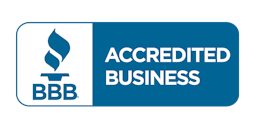
Increase Your Chances for Credit Card Approval
Topic - Credit cards
Published by Greensprout Team | 10/24/22
Greensprout.com is an independent, advertising supported comparison website. The products or offers that appear on this website are from third party partners and advertisers from which Greensprout.com receives compensation.
Entering your information and clicking "Apply" is easy, but it doesn't always mean you are going to get approved. In this short guide, we'll cover a few key factors that can greatly increase your chances of getting approved for the card you want.
Get Your Score
There are 3 agencies that report credit scores: Equifax, Experian, and TransUnion. To further complicate the situation, there are 2 primary types of scoring being used today: the FICO Score and VantageScore. FICO is older, more widely used, and the primary score used for mortgage lending; however, VantageScore is also gaining widespread use.
You are entitled to 1 free report annually directly from the scoring agencies; however, this report is not always as detailed as many consumers want. Additionally, most people want to check their scores more often than just once a year to keep an eye on potential changes and know exactly where they are before applying for a loan or credit card. You can get full access to your score and report HERE.
Understand Your Score
As you probably already know, the primary factor in getting an approval is your credit score. While there are multiple credit scoring systemsóeach of which might calculate your score a bit differently, depending on which one you checkólenders and credit card companies generally classify credit score into 1 of the following 4 categories:
* Bad credit: 300-629
* Average credit: 630-689
* Good credit: 690-719
* Excellent credit: 720 and above
The better the credit card is that you're applying for, the higher your credit score generally needs to be in order to get approved. A rating of Excellent should qualify you for almost every card, while a score of Good qualifies you for many. If your score is on the borderline between 2 categories, you might want to wait to apply until you can bump it up into the next bracket to increase your chances of approval.
On the other hand, don't lose hope if you have bad credit. There are special cards designed specifically for people with bad credit to help them build up their scores. These cards might come with higher rates or more prerequisites, but they are a great way for you to start building your score. Then, after you've raised your score, you can apply for a better card.
Raise Your Score
There are 3 key factors to increasing your credit score over time: payments, balances, and debt.
1. Payments
Making payments such as your mortgage payment, auto loan, or credit card payment on time is the primary way for you to build good credit. The longer you continue to make your payments on time, the more your score will increase. Always try to avoid making a late payment, as this will negatively impact your score.
2. Balances
Even if you make all your payments on time, you could be declined for a new card if your balances are too high on your existing cards. In fact, your balance can account for 30% of your credit score. As a rule of thumb, try to keep your running balance under 30% of each card's credit limit. For instance, if your card has a $1,000 credit limit, don't let the end-of-month balance exceed $300.
3. Debt
In addition to credit card balances, other debt is a factor when it comes to being approved. If you've recently taken on new debt like a mortgage or auto loan, it might impact your chances of being approved for a new card. Applying for too many lines of credit close together will hurt your chances of approval.
Report All Your Income
While your credit score is the primary factor in getting approved, lenders also have to consider your ability to pay off any credit you might use on your new card. As mentioned before, debt is an important part of calculating approval, and credit card issuers use a debt-to-income ratio to determine your ability to make payments.
You should never overstate your income; however, you do want to be as accurate as possible, and that means including all potential sources of income in addition to your full-time job. Many people do not realize this, but applicants 21 and older can use their "household income" in addition to their personal income on their credit card application. This means you can include not only your income but also that of your spouse or partner. This can greatly increase your chances of getting approved.
Conclusion
No one likes getting their credit card application denied. However, the knowledge you gained from this article should be enough to prepare you to increase your chances of being approved on your next application.
Greensprout Newsletter

Yes! I want to recieve smart money tips and exclusive offers from Greensprout Team!
By submitting this form you agree to receive emails from Greensprout and to the privacy policy and terms.
Latest Stories
Published by Greensprout Team | 01/13/24
FEMA: Your Lifeline in Disaster Recovery and Preparedness
FEMA’s mission is to help people before, during, and after disasters. It works closely with state, local, tribal, and territorial governments, as well as private and nonprofit organizations, to prepare for, respond to, and recover from disasters. The agency focuses on reducing the loss of life and property by fostering a culture of preparedness and resilience.
Published by Greensprout Team | 01/13/24
Zero-Day Options: Fast Profits or High Stakes? Here’s What You Need to Know
Zero-Day Options, often abbreviated as 0DTE, are options contracts that expire on the same day they are traded. Traditional options contracts typically have expiration periods ranging from days to months, but 0DTE options offer an extremely short window for trading. They are most commonly associated with major stock indices, such as the S&P 500, and are increasingly popular due to the rise of daily expirations for some index options.
As Seen On














The 2.5% increase for 2025 is calculated based on the Consumer Price Index for Urban Wage Earners and Clerical Workers (CPI-W). The Social Security Administration (SSA) uses the CPI-W to measure inflation by tracking the prices of goods and services, such as food, housing, and medical care. When inflation rises, the COLA ensures that benefits adjust accordingly.